Text Stanislava Kopáčková, Model, Czech Republic
 New York City is packed with legends and legendary landmarks. Hotel Chelsea is one of these landmarks. During her visit to the Big Apple, Stanislava Kopackova stayed at this hotel and was able to put together a very intriguing report about an unusual experience, supported by photographs from Adolf Zika. (WoL)
New York City is packed with legends and legendary landmarks. Hotel Chelsea is one of these landmarks. During her visit to the Big Apple, Stanislava Kopackova stayed at this hotel and was able to put together a very intriguing report about an unusual experience, supported by photographs from Adolf Zika. (WoL)
‚Here, life and death walk hand in hand to an unknown destination.‘
Imagine a place where all the significant celebrities from the world of movies, music, art, theater, literature, and any other form of fine arts I forgot to mention, spent at least one night. These are the exact same celebrities whose names (and their respective work) are considered to be crucial and epochal of today’s age. Celebrities, whose fates have become legendary. I am speaking of a place called Hotel Chelsea.
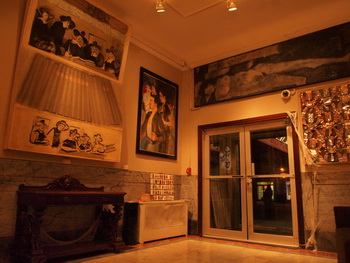 Try to visualize the moment you are at the hotel to spend the night. Imagine walking into the lobby, signing in at the reception and trying to perceive the commotion around you detail by detail. How does one enter such a place clear of all the prejudice and previously formed expectations, when the place itself has become a legend? Consciously, you can’t prepare yourself for it. You have to live through the experience personally, since when you arrive at the place and realize where you are, you are in shock. You get the overwhelming feeling you will not have enough time to see it all and that time is your enemy. I have spent the night at Hotel Chelsea thanks to something others may call fate.
Try to visualize the moment you are at the hotel to spend the night. Imagine walking into the lobby, signing in at the reception and trying to perceive the commotion around you detail by detail. How does one enter such a place clear of all the prejudice and previously formed expectations, when the place itself has become a legend? Consciously, you can’t prepare yourself for it. You have to live through the experience personally, since when you arrive at the place and realize where you are, you are in shock. You get the overwhelming feeling you will not have enough time to see it all and that time is your enemy. I have spent the night at Hotel Chelsea thanks to something others may call fate.
It’s sort of a psychotic asylum from the dark novels, the Ushers’ house from Edgar Allan Poe, a gallery full of paintings with ghosts in the hallways or a funhouse with tenants. It’s one of hundreds of hotels in New York, one of hundred thousand others around the whole world. And the first impression is always the strongest. There is only one Hotel Chelsea. The ‘vampire-like’ atmosphere stays imprinted in your mind just like your experience with LSD. A rest stop for rare individuals.
You can find Hotel Chelsea in New York City, in the heart of the Chelsea district, at 222 West 23rd street right between 7th and 8th Avenues. It’s walking distance from the famous Flatiron building. Don’t expect any kind of luxury, breakfast on silver plates, modern equipment or bell-boys who would go as far as to wipe your butt. No, you will certainly not find that here.
 |
 |
‚It’s hard to tell which art’s a decoration and which is a relic.‘
At the entrance, you are greeted with a red and white striped canopy with the number 222 at the top. You are a step away through the glass door from the entrance hall. When you enter the lobby, you feel as if you were in a different century. It is not your typical hotel lobby. It rather resembles a large living room filled with sofas and divan beds, a large fireplace decorated with several woodcuttings, and paintings all the way up to the ceiling. Altogether, it feels cozy. Each piece of furniture is different and that’s exciting, since it looks like a movie set. A dark wooden surfaced reception desk seems extremely sturdy and the guest book on top of it surely holds many interesting stories. If it weren’t for the computer, you would really believe as if you’ve traveled in time. On the left of the lobby, guests have two telephone booths at their disposal (this place has its atmosphere!) however, your eyes are immediately drawn to the door covered with the police line yellow tape. It’s hard to tell which art’s a decoration and which is a relic.
 The iron railing around the staircase forms the actual heart of the building. You can use it to get from the basement all the way to the roof. Every room is unique, every floor and hallway is different and each door is painted based on which artist lived behind it. There are all sorts of different door handles and massive knockers, old locks and the room numbers are attached in many different ways on individual doors.The iron railing around the staircase forms the actual heart of the building. You can use it to get from the basement all the way to the roof. Every room is unique, every floor and hallway is different and each door is painted based on which artist lived behind it. There are all sorts of different door handles and massive knockers, old locks and the room numbers are attached in many different ways on individual doors.
The iron railing around the staircase forms the actual heart of the building. You can use it to get from the basement all the way to the roof. Every room is unique, every floor and hallway is different and each door is painted based on which artist lived behind it. There are all sorts of different door handles and massive knockers, old locks and the room numbers are attached in many different ways on individual doors.The iron railing around the staircase forms the actual heart of the building. You can use it to get from the basement all the way to the roof. Every room is unique, every floor and hallway is different and each door is painted based on which artist lived behind it. There are all sorts of different door handles and massive knockers, old locks and the room numbers are attached in many different ways on individual doors.
The old floor and flapping doors, the humid smell of lightly rendered walls with original paint, long hallways ending with black bars on the window. Simply a hotel with its ghosts and tenants, chessboard bathrooms, authentic bathtubs on little legs, round porcelain faucets labeled hot and cold, porcelain sinks and antique toilet bowls. Warhol-like radiators painted in silver in the rooms. And most importantly, the hotel is a Gallery with a big G. Welcome to your personal exhibition.
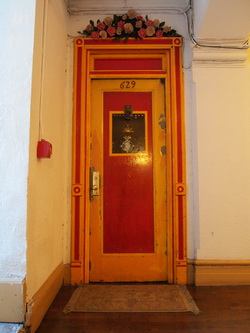 |
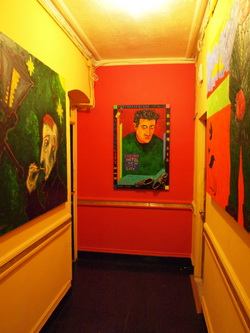 |
| ‚Every room is unique, every floor and hallway is different | |
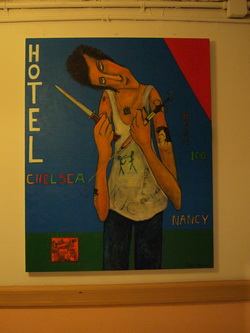 |
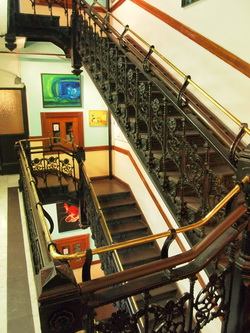 |
| and each door is painted based on which artist lived behind it.‘ | |
The project of the original apartment building, which later became a hotel, was created by Hubert, Pirsson & Company in the so-called Queen Anna style and Victorian gothic architecture. This style used can be interpreted as the American version of the British architecture in the early 18th century. It is characterized by red bricks, black iron a white ledges. When you look a little closer, you will see several things – the railings decorated with flower motives, Tudor roses, wooden panel doors and marble floor.
The tenants slash artists were allowed to stay at the hotel even if they had money trouble. The owner, in a way a benefactor as well, wanted only one thing in return, and that was their art. Hence, he was able to put together such a magnificent collection of paintings and other artistic works. In the hotel, art is always in motion: A mix of the old and new spreads around, the display changes from one day to another and the best thing about it is that the guests are ones who make all this possible, leaving behind not only their work, but also messages and their wishes for the future, sticking notes and comments on things like fire extinguishers and other places. Here, people live with art, unlike in your typical gallery where people go intentionally to see ‘isolated’ and ‘impersonal’ art.
What I can definitely recommend is a nice walk around the hotel at night. No one will disturb you except an occasional ghost here and there and the only sounds you’ll here will be the creaky doors, the breeze coming from all sides and perhaps your own heartbeat or the sound of your loud breathing.
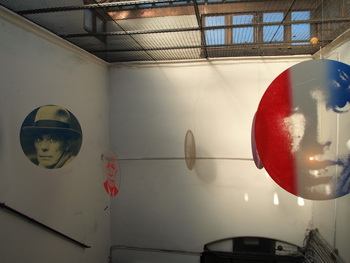 The photographs and paintings next to the drawings and random graphics all create a maze for the eyes, desperately trying to find a way through all the surrealistic scenery. It almost has a meditative character and you start to act as if you were visiting a cemetery: you speak quietly and walk slowly. And maybe it’s only because people are sleeping behind the closed doors leading to the rooms. You can find the works of international artists all around the staircase, across all the hallways on each floor, next to all the rooms.
The photographs and paintings next to the drawings and random graphics all create a maze for the eyes, desperately trying to find a way through all the surrealistic scenery. It almost has a meditative character and you start to act as if you were visiting a cemetery: you speak quietly and walk slowly. And maybe it’s only because people are sleeping behind the closed doors leading to the rooms. You can find the works of international artists all around the staircase, across all the hallways on each floor, next to all the rooms.
Another game of fate led to the fact that I visited a part of the hotel completely sober and with rational thinking, whereas the other part I saw completely wasted and relaxed. In this state, let’s say of serene artificial character, I come up with things I would otherwise never even think of. Perhaps a person under influence uses his or her brain in a different way or a different part of it, or simply lets loose and shuts down altogether. It’s hard to tell and at the same time unimportant. I don’t regret being drunk, it was interesting anyway. When I am under the influence of alcohol and this in no way is a promotion of alcoholism, you tend to apprehend things differently and notice things you’d otherwise miss. You experience the moments at the hotel as if you were a schizophrenic, but based on the fact that artists are usually on the ‘alternative’ side, it helps you perceive their artwork in a better fashion.
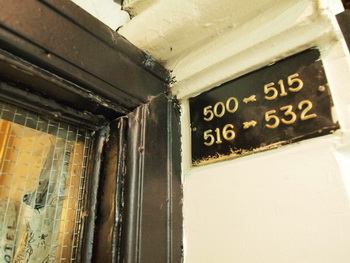 |
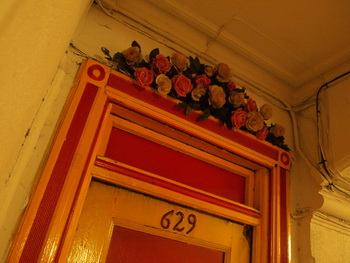 |
The building itself was established in 1883 and opened for the public in 1884 as one of the first private apartment buildings. In its time, this 12-floor building from red bricks was the tallest building in New York up until 1899. At the time, Chelsea, and especially 23rd street, was the center of the theatre district. However, thanks to the economic difficulties and change of location of several theaters, it was a matter of years before the apartment building went bankrupt and in 1905, the building changed its owner and was reopened as a hotel. The building of the hotel also holds an interesting award: the city of New York declared it as the first cultural landmark.
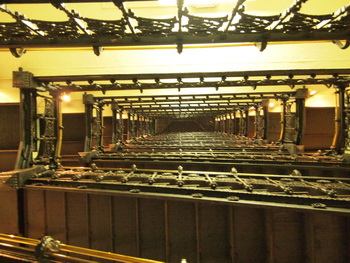 Hotel Chelsea plays a role in many movies, books and songs, and even the former president’s daughter was named after it. There are large numbers of texts written about Hotel Chelsea and as a cherry on top, most of them mention the various celebrities that have lived in the building over the years. And if I forgot to mention them here myself, I would feel guilty about not giving you the most exciting details about the place. Behind its red brick walls, the building has accommodated an unbelievable number of celebrities, who have now become legends: Actors, directors, literary experts, photographers, musicians, painters, thinkers, scientists and bohemians. The hotel became a sanctuary for artists such as Iggy Pop, Miloš Forman, Sir Arthur C. Clark (guess where he created his masterpiece 2001: A space odyssey (1968)!), Virgil Thomson, Robert Mapplethorp, Bob Dylan, Charles Bukowski, Janis Joplin, Parri Smith, Leonardo Cohen, Arthur Miller, Allen Ginsberg, Jack Kerouack (who wrote his novel On the Road here), Mark Twain, Jean-Paul Sartre, Stanley Kubrick, Dennis Hopper, Uma Thurman, Jane Fonda, Edith Piaf, Frida Kahlo, Willem De Kooning, Claese Oldenburg, Henri Cartier-Bresson and many and many others.
Hotel Chelsea plays a role in many movies, books and songs, and even the former president’s daughter was named after it. There are large numbers of texts written about Hotel Chelsea and as a cherry on top, most of them mention the various celebrities that have lived in the building over the years. And if I forgot to mention them here myself, I would feel guilty about not giving you the most exciting details about the place. Behind its red brick walls, the building has accommodated an unbelievable number of celebrities, who have now become legends: Actors, directors, literary experts, photographers, musicians, painters, thinkers, scientists and bohemians. The hotel became a sanctuary for artists such as Iggy Pop, Miloš Forman, Sir Arthur C. Clark (guess where he created his masterpiece 2001: A space odyssey (1968)!), Virgil Thomson, Robert Mapplethorp, Bob Dylan, Charles Bukowski, Janis Joplin, Parri Smith, Leonardo Cohen, Arthur Miller, Allen Ginsberg, Jack Kerouack (who wrote his novel On the Road here), Mark Twain, Jean-Paul Sartre, Stanley Kubrick, Dennis Hopper, Uma Thurman, Jane Fonda, Edith Piaf, Frida Kahlo, Willem De Kooning, Claese Oldenburg, Henri Cartier-Bresson and many and many others.
‚The ‘vampire-like’ atmosphere stays imprinted in your mind just like your experience with LSD.‘
Hotel Chelsea is also ready as it ever will be for all sorts of movie or photography productions. It has been used for this purpose many times in the past. On the website, you can find the price list and the offer of qualified personnel who can assist during such productions. One of the last persons to use these services was for example Dave Gahan from Depeche Mode to film his video clip for the song ‘Saw Something’, which belongs to his solo project ‘Hourglass’. You can find the video clip on youtube.com, where you’ll see the rooms and hallways of the hotel and in the end of the video, you’re able to see the amazing wooden reception. In the late 80s, Madonna was also one of the residents, and in 1992, she returned to make a few photographs for her book called ‘Sex’ in the room 822. The hotel also offers regular excursions for outside guests.
Did you ever stop to think that everything around us is actually an artifact from the past? That everything we see is the consequence of the past? A product from previous generations? It’s a little terrifying to view the world this way, but at this hotel, you have no other choice than to let it get to you eventually.
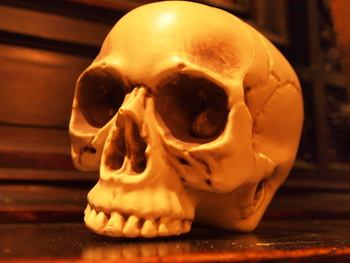 The ironic thing about death however is that it is the most direct symptom of life, it’s most precise witness. When we are dying, we are still alive and that is a fact. Let’s say that life is an active process of change, whereas death (in its most extreme meaning a metaphor can have) in this case looks as a one-time only matter, the last moment of life – the transformation into relics.
The ironic thing about death however is that it is the most direct symptom of life, it’s most precise witness. When we are dying, we are still alive and that is a fact. Let’s say that life is an active process of change, whereas death (in its most extreme meaning a metaphor can have) in this case looks as a one-time only matter, the last moment of life – the transformation into relics.
This hotel lives with its dead. They are part of its legend. Sid Vicious’ life partner died here, his beloved Nancy. Artist Alphaeus Philemon Cole, who lived here for 35 years till his death in 1988 when he was 112 years old, was actually the oldest living man alive at the time. Dylan Thomas died here in 1953 from alcohol poisoning. And for a period of time, the Titanic survivors lived at the hotel, since it is close to Pier 54, a port where the Titanic was supposed to have landed. The hotel was also a home to many of the sailors that returned from their duty in the First World War. It has 125 hotel rooms and around a hundred apartments for rent. Here, life and death walk hand in hand to an unknown destination.
At night, you tuck yourself in and listen to the sounds around you, and no matter what happens next or what state you are in at the moment, the first thing you do is listen. Then you close your eyes and see the paintings.
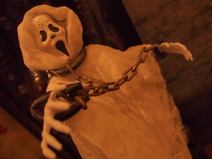 |
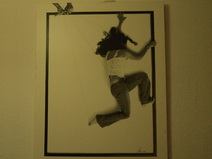 |
 |
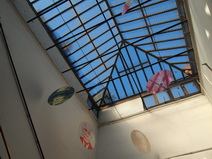 |
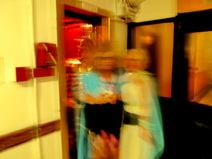 |
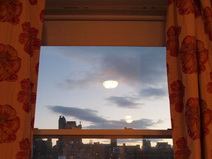 |
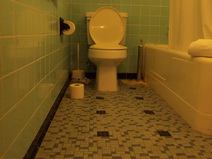 |
 |
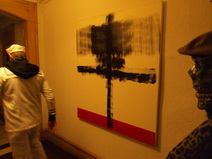 |
Photographs by Adolf Zika, Photographer, Czech Republic
